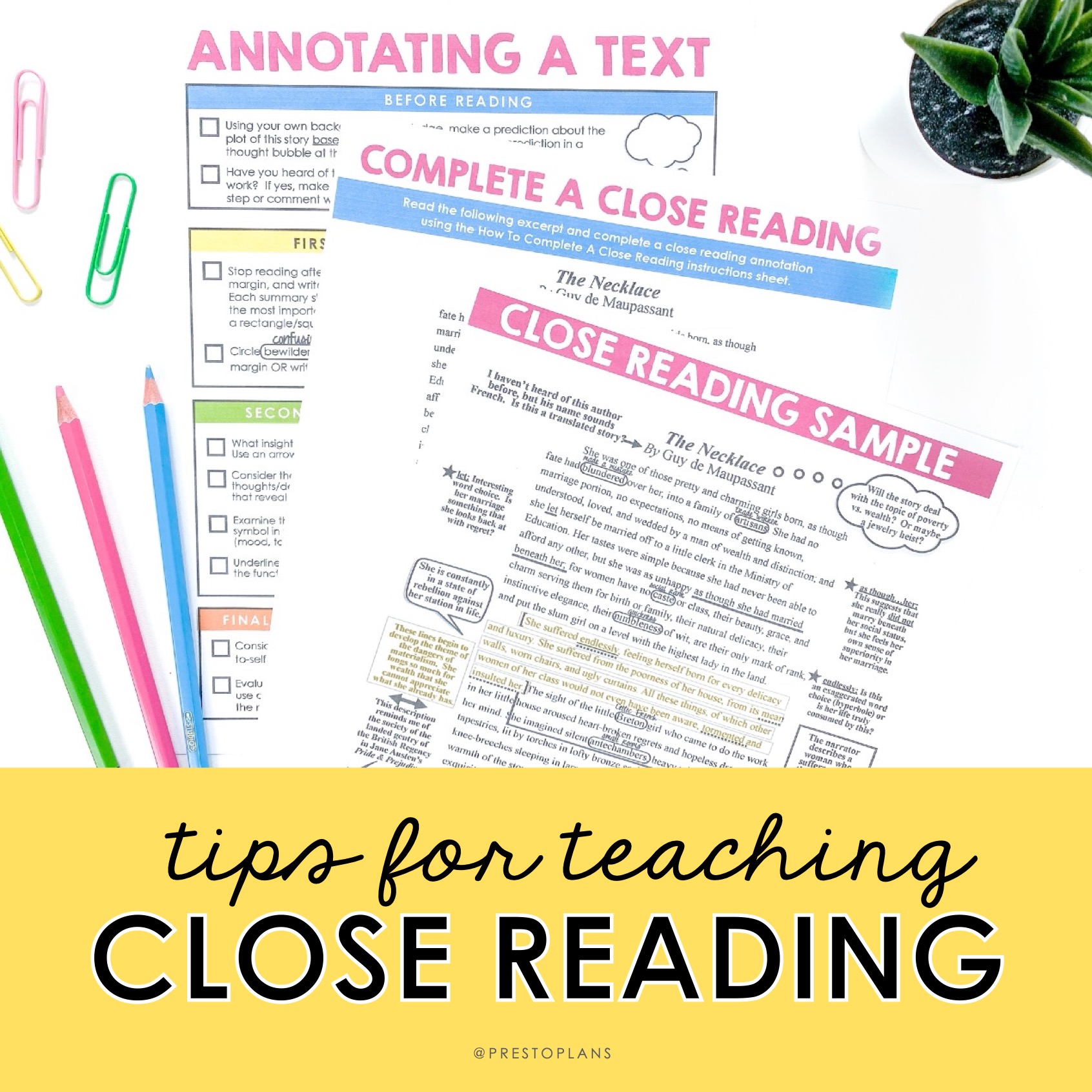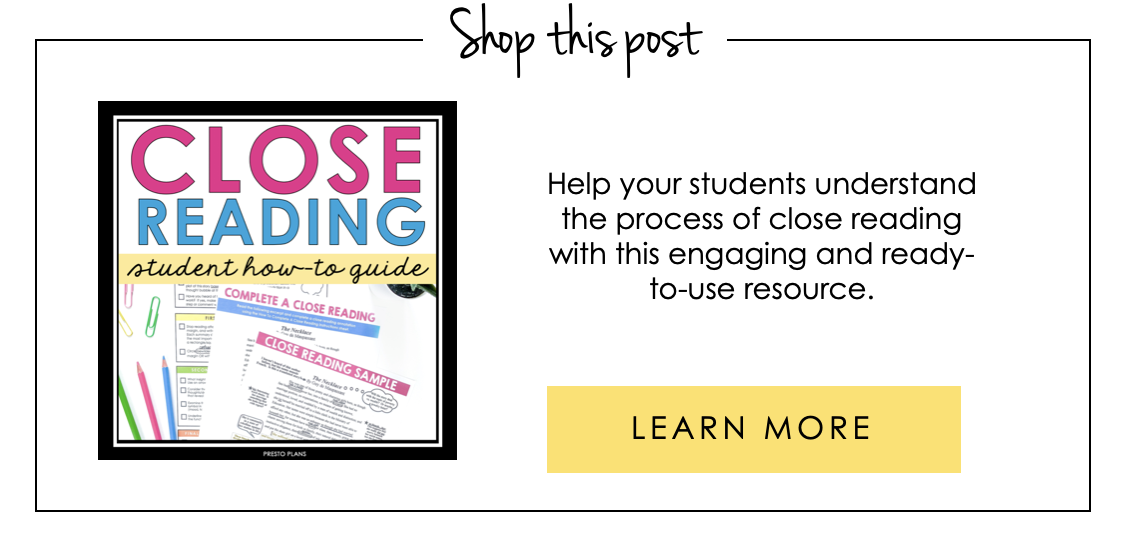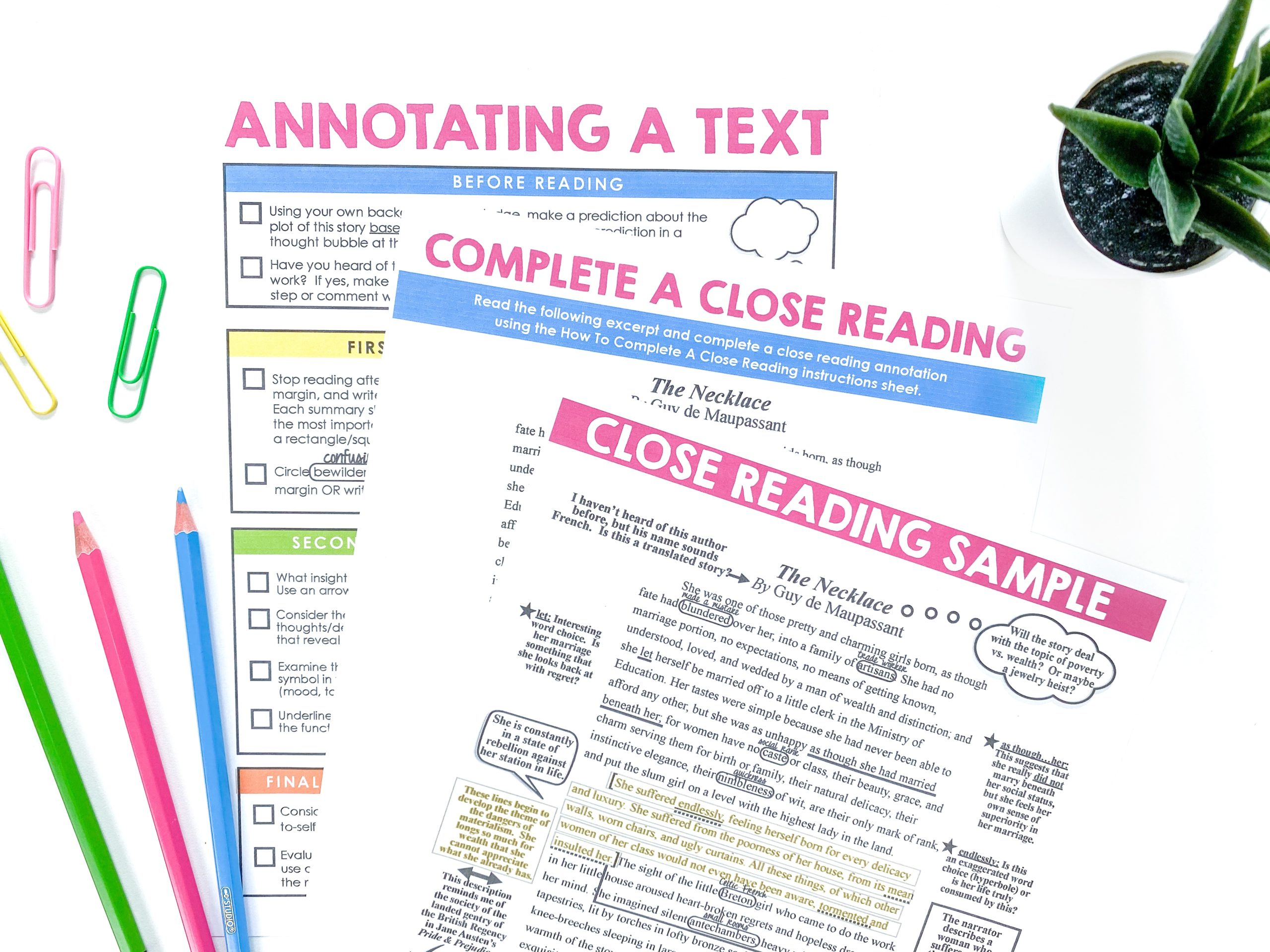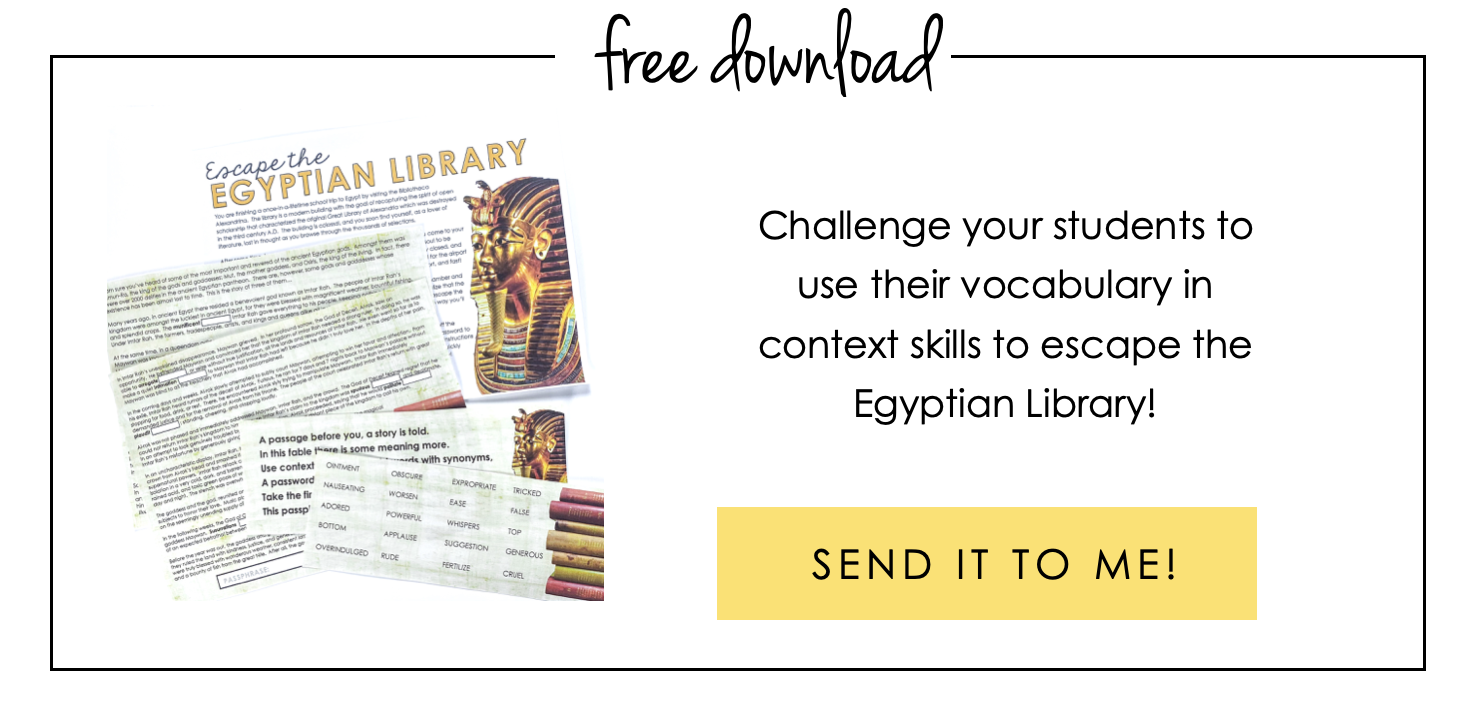PRESTO PLANS
Sent straight to your inbox
CLICK HERE TO ACCESS
Sign up to receive 10 ready-to-use ELA resources your students will love!
10 FREE ELA RESOURCES

How to Teach Close Reading to Middle and High School Students
When I teach close reading to middle and high school students, I try to keep in mind the ways I actually use this skill in my own life. Close reading for students typically means they are sitting at a desk and annotating along the margins. When I sit down to read something with the intention of retaining information or analyzing it, my reading process becomes much more active, and it does in fact internally resemble what it is my students are doing. To help your students become more active readers who don’t always require a pen in hand, you’ll want to walk them through the step-by-step process of completing a close read.
What is close reading?
You’ll want to make sure that your students know what close reading and annotation is at the outset. Close reading is the process through which a reader uses a series of active reading strategies to gather important information from a text and share what they learn through the annotation process. This typically takes the form of writing ideas within and along the margins of the text. We will go into more detail below on what exactly students should write, but it will be important that you make sure you and your students know what constitutes close reading and how it differs from typical reading.
Why Teach Close Reading?
Close reading leads to a deeper understanding of a text. We teach close reading to give our students important tools that will serve as the foundation for not only their reading comprehension, but also their ability to analyze, evaluate, and examine things like the overall why of a text, literary terms, text connections, and much more.
How to Teach Close Reading
Model the skill:
It’s crucial that we as teachers show the students exactly what we expect their close reading to look like. Model the skills over and over, multiple times. Show the students what close reading looks like by doing a “live” close read of a passage on the board. Project the text onto the whiteboard and use markers to annotate for students, so they can see what you are writing, but also hear your thought process as you are annotating. I typically use The Necklace by Guy de Maupassant as an example as there is a lot to work with at the beginning of the story.
A collaborative process:
We might think of close reading as being a solitary activity. I like to think of close reading as a collaborative process that moves into an independent process. Begin by working together on these skills as a class. Provide scaffolding in the form of supports and structures with group or paired work that is slowly taken away to eventually be an independent practice.
Provide a Step-by-Step Structure for Students
Let’s take a closer look now at what a step-by-step structure for close reading might look like for your students. I encourage you to use this structure in your class or create something similar. I like to break down the close reading process into four sections: Before Reading, First Reading, Second Reading, and Final Reading. Let me describe each step…
-
Before Reading
I like to encourage students to make a prediction about the text based on what they know about it before reading. What does the title suggest the story might be about? What do you know about the author, if anything? Have you read anything by this author before? Close reading is a process that begins even before the reading of the text itself.
-
First Reading
On the first reading, get your students to circle the words they don’t understand. Have them look up these words in the dictionary and include a definition or a synonym beside it. It’s during this first reading that the students should also make note of information that seems key to the plot of the story.
-
Second Reading
The second time around is when students should dive a little deeper. Get them to start thinking about the theme by having them focus on the important lessons they think are in the story. You want students to be thinking about the craft and structure of the text on this reading. Have them make note of the use of things like characterization, figurative language, and literary devices, for example.
-
Final Reading
The final reading is when I like to get my students to begin making connections (text-to-text, text-to-self, and text-to-world). At this point, the students’ opinions about the elements of the text are supported by their two previous readings. After this last step in the close reading process, each student should have a much stronger grasp of the material than they would have if they only read it once without using any of the above-mentioned strategies.
Of course, some students will benefit from this process in different ways than others. Close reading comes naturally for some and is a real challenge for others. This is part of the reason it’s so important to have a clearly established structure for your students to follow.
I hope you found these insights on how to teach close reading to middle and high school students helpful. Best of luck working on this with your class! If you plan on teaching students how to annotate poetry, you’ll want to check out this post that walks you through the process of poetry annotation.
Search the blog for what you are teaching
GIVEAWAYS
sent straight to your inbox!



share this post